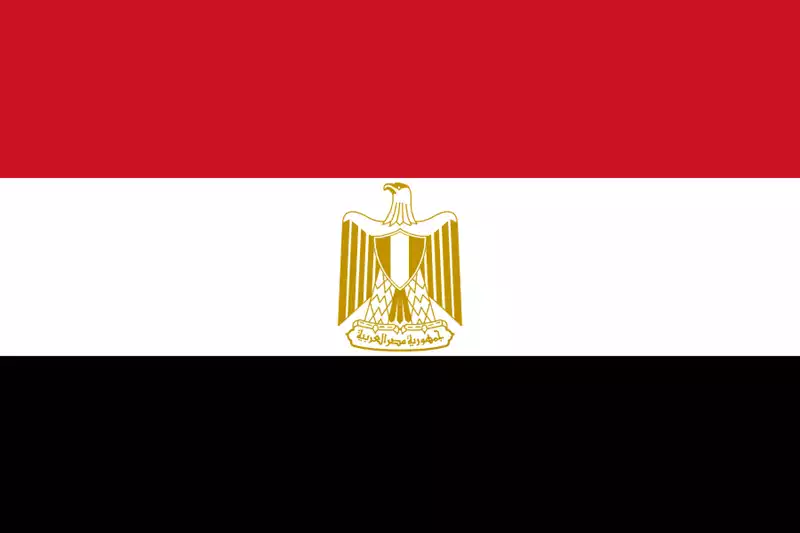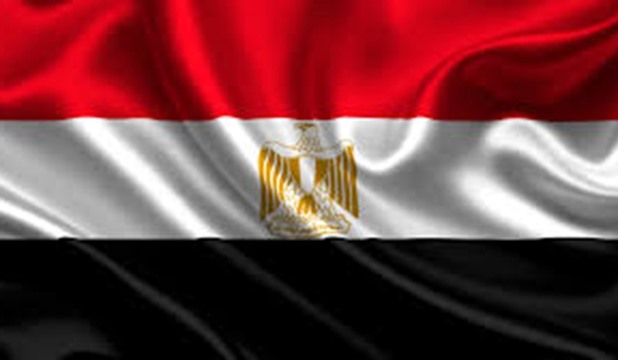Egypt’s flag stands as one of history’s monumental symbols. Today, we will look at Egypt’s flag’s history, meaning and colours.

What is Egypt’s Flag?
Egypt’s flag is the flag of Egypt (obviously, right?). Hold on, don’t be disappointed yet. The flag of Egypt is one of the longest-reigning relics we have in our world.
Even after the many changes the flag has gone through, it hasn’t failed to house the Egyptian spirit. What is the Egyptian spirit? Well, I guess that’s a topic for another day.
Egypt’s flag, after many changes now manages to hold three major colours; Red, White, and Black. These colours have, at one time or another been used. Now, they align in perfect Egyptian harmony.
So, what makes Egypt’s flag so special that we have to discuss it today?
Where do I start? The history and stories that lie behind the fiery red, holy white, and dangerous black call for understanding. How did such a great city arrive at those definitive colours?
If I asked any of you what you know about Egypt. Your answer would be… Pharaoh! (Yep, I said it). That isn’t wrong though.
But the country of Egypt or should I say empire has tales that are shaping the present and even the future. The flag is a show of that.
That would bring us to the next chapter of this post. The History of Egypt’s Flag. (Drum rolls, please).
Related: MLM Flag: Everything To Know About The Gay Community
The History Of Egypt’s Flag

The history of Egypt’s flag would take you back to the before 661. Do you know how far that is? That is 1,363 years ago (the figure is reducing the effect).
One thousand one hundred and sixty-three years ago. Do you feel it now?
Well, from that time till now, Egypt’s flag has continued to change due to man-made circumstances and a hunger to attain an ideal Egyptian empire.
The first flag of Egypt was a dark black flag. It was that black. The flag was of the Rashidun Caliphate. Let me tell you a bit about it.
Related: Nicaragua Flag: Meaning, History & Colours
Rashidun Caliphate

Following the death of the prophet Muhammad, the Rashidun Caliphate was founded by some close companions of the prophet.
They were known as the Rashidun or Rightly Guided Caliphs.
During the Rashidun Caliphate, Islam expanded rapidly through military conquests, reaching regions as far as Egypt and Persia.
The origination of the black flag cannot be specifically placed but can be traced to the bravery of Islamic warriors.
History tells us that when Islamic warriors approached Egypt, they encountered some resistance from some Roman soldiers.
During one particular battle, the Muslims improvised by tearing their garments and stitching them together to create a makeshift black flag.
This flag became a symbol of intimidation and solidarity among the Muslim troops. After their victory, the black flag was adopted as the emblem for the newly conquered territory of Egypt.
The black flag colour was changed in the year 661. It was changed to a plain white field. This happened when the Umayyads took control.
See: 10 Red Flags In Relationships You Should Never Ignore
The Umayyads

The Umayyads were a prominent Arab-Muslim dynasty that ruled the Islamic Caliphate from 661 to 750 AD.
All white isn’t the most natural colour to choose for a flag but the Umayyads made it work.
There are a few reasons history gives us for their unusual decision. Firstly, they chose the white colour because of what it symbolises.
Things such as faith, peace, purity, etc. More so, white is an Islamic colour. Another point of view is that they chose it for its uniqueness in battle.
It can be easily seen and would communicate with friends and foes easily.
In 750, the Abbasid Caliphate came into power, and guess what? They chose the former black as their colour.
This might have been a racism issue, but what can I say? (haha).
The Abbasid Caliphate

The time of the Abbasid caliphate was one of growth, development and flourish. It is known for its advancements in science, culture, and governance.
The new Caliphate might be different but the same idea remained when choosing the new colour. The colours held Islam high and gave the war a more practical feel.
The Abbasids reigned from 750 to 1258.
Just like the weak Afonja of Ilorin. The strength of the Abbasid Caliphate was compromised.
During the later part of the century, The Fatimid Caliphate had control of most of Egypt, including Cairo, their flag was a simple green field.
The Fatimids were an Ismaili Shia dynasty, and the colour green was used to signify their allegiance to the Shia branch of Islam and their claim to descent from the Prophet Muhammad through his daughter Fatimah, from whom the Fatimids derived their name.
The green colour is also synonymous with fertility, growth, agriculture etc.
From the time of the Fatimads, many more takeovers took place. Caliphate upon Caliphates, empire upon empire.
Check: Panama Flag: Everything You Need to Know
Many More Takeovers

The Ayyubid Sultanate took over in 1171 with a grand yellow colour for their flag. The colour code is FECD00 (don’t mind me, I’m a designer).
In 1341, the Mamluk Sultanate made their claim to power. They were thoughtful enough to keep the yellow colour but added a white crescent. This is to show their faith in Islam.

The Mamluk Sultanate ruled until they were defeated in the conflict with the Ottomans in 1517.
After Egypt became part of the Ottoman Empire, its flag changed to a red background with a white crescent and a five-pointed star in the centre.

This flag was similar to the one used during Muhammad Ali’s rule in the 1800s.
When Egypt became an autonomous tributary state within the Ottoman Empire, the flag went through another change.
It had three smaller crescent moons and stars arranged in a triangle on the left side.

But during the British occupation in 1881, the flag went back to its previous design with a single crescent and star on a red background.
It’s interesting how flags can evolve and reflect different periods in a country’s history.
The Last Dance

After the revolution in 1953, Egypt chose a new flag with horizontal stripes of red, white, and black. In the centre, they placed the Eagle of Saladin.
But when Egypt united with Syria in 1958 to form the United Arab Republic, they made a change to the flag.
They kept the tricolour design but replaced the Eagle of Saladin with two green five-pointed stars.
Whew, Egypt went through so much change, you have to be proud of their longevity. Now that you know all about their history, what do the colours mean?
See: Aromantic Flag: Everything You Need to Know
The Meaning of Egypt’s Flag Colours
In this section lies the beauty of Egypt’s flag. The flag has three colours; Red, White and Yellow.
Let’s walk through and see what they symbolize.
Red
The Red represents blood. Who’s blood? The blood of all those who fought to deter colonization. Britain finally colonized Egypt but it wasn’t an easy stroll to victory.
White
The white colour represents the purity in the hearts of Egyptians. I haven’t been to Egypt yet, If you have, comment to let me know how true that is
Black
Now here’s the fun part. The black part of Egypt’s flag represents darkness that lies subtly in man’s heart.
But the white colour placed over it shows that at the end of it all…
GOOD WILL OVERCOME EVIL!!!
That’s it, ladies and gentlemen. I hope you enjoyed this one.
Don’t Miss These
Frequently Asked Questions
1. What does the Egyptian flag mean?
The red band symbolizes the Egyptians’ blood in the war against colonization.
The white band symbolizes the purity of the Egyptians’ hearts.
The black band below the white symbolizes the manner in which darkness is overcome.
2. What is the alternative flag of Egypt?
When the British occupied Egypt in 1881 the flag was changed back to the single crescent and star on a red field.
After a revolution in 1953 an alternative flag was chosen that was a red-white-black horizontal tricolour that featured a large Eagle of Saladin in the centre.
3. What is the bird on the Egyptian flag?
The flag bears Egypt’s national emblem, the Egyptian eagle of Saladin, centred in the white band.
Horizontally divided red-white-black tricolour flag with the Eagle of Saladin. Variant of the national flag without the Eagle of Saladin.
4. What is the Arabic flag of Egypt?
The national flag of Egypt (Arabic: عَلَمْ مِصر [ˈʕælæm mɑsˤɾ]) is a tricolour consisting of the three equal horizontal red, white, and black bands of the Egyptian revolutionary flag that dates back to the 1952 Egyptian Revolution.
Any Last Words?
Yes, yes, I got something.
The story of Egypt’s flag is one of perseverance, guts and intention. Despite the change of power throughout many hands and generations, they all bore the Egyptian ideal in their mind.
What is the Egyptian ideal?





